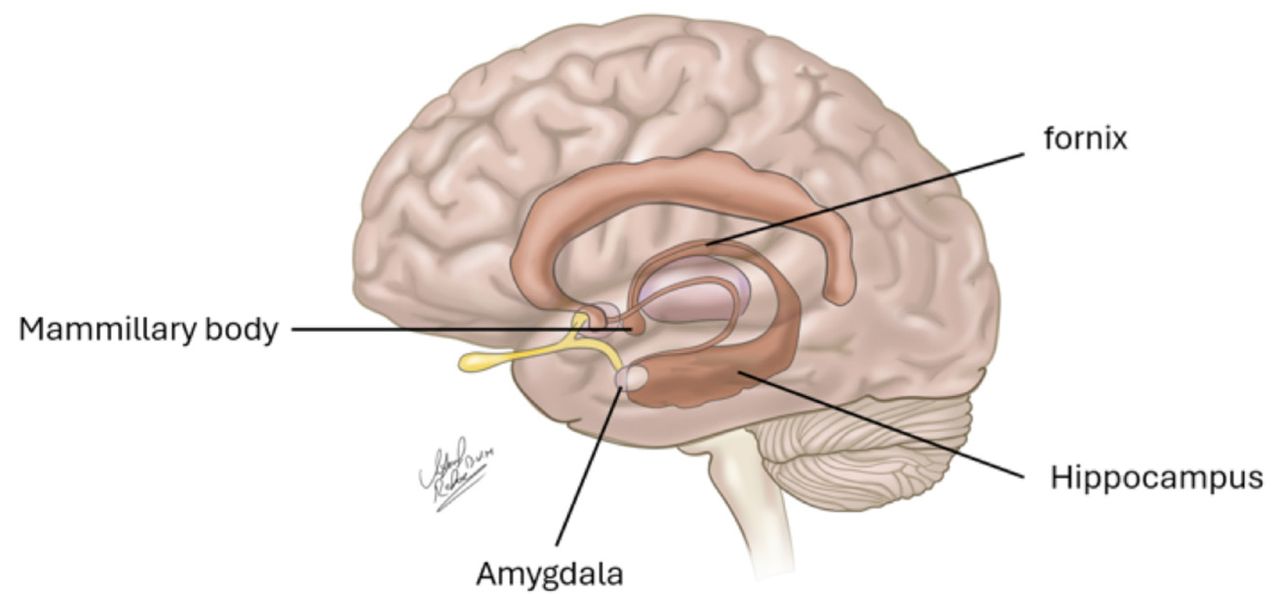Differential impacts of social isolation and enriched environment on multi-sensory brain-wide functionality and network segregation – Nature

Report on the Impact of Environmental Conditions on Brain Functionality and Network Segregation
1.0 Executive Summary
This report details a study investigating the effects of early-life environmental conditions—specifically social isolation and environmental enrichment—on the brain’s sensory processing and functional network organization in a murine model. The findings provide critical insights into neural plasticity and have significant implications for achieving several United Nations Sustainable Development Goals (SDGs), particularly SDG 3 (Good Health and Well-being), SDG 10 (Reduced Inequalities), and SDG 11 (Sustainable Cities and Communities). The study demonstrates that social isolation leads to reduced segregation of brain networks and hyperconnectivity, mirroring conditions seen in certain psychiatric disorders. Conversely, an enriched environment enhances higher-order sensory functions and maintains healthy network segregation. These results underscore the profound impact of physical and social environments on neurodevelopment, highlighting that creating supportive and stimulating living conditions is fundamental to promoting mental health and reducing health inequalities on a global scale.
2.0 Introduction
2.1 Background: Environmental Influence on Neurodevelopment
The external environment, encompassing both physical and social factors, is a critical determinant of brain development and function. An individual’s ability to adapt and thrive is contingent on the brain’s capacity to process sensory information and organize into efficient functional networks. This research addresses the mechanisms by which environmental conditions modulate brain functionality, a topic of central importance to public health and sustainable development.
2.2 Relevance to Sustainable Development Goals (SDGs)
Understanding the neurological impact of environmental conditions is directly aligned with several SDGs. This research provides a scientific basis for policies aimed at:
- SDG 3: Good Health and Well-being: By elucidating the neural underpinnings of mental health, this study contributes to Target 3.4, which aims to promote mental health and well-being. The findings on social isolation model the neurobiological effects of a significant public health challenge, while the results from environmental enrichment suggest pathways for therapeutic interventions.
- SDG 10: Reduced Inequalities: The contrast between deprived (isolated) and enriched environments serves as a powerful analogue for socioeconomic disparities. The study highlights how unequal access to stimulating and socially supportive environments can lead to disparities in neurodevelopment, reinforcing the importance of Target 10.2, which calls for the social and economic inclusion of all.
- SDG 11: Sustainable Cities and Communities: The concept of an “enriched environment” aligns with Target 11.7, which advocates for universal access to safe, inclusive, and accessible public and green spaces. Such community features provide the sensory and social stimulation shown to be vital for healthy brain function and overall well-being.
3.0 Methodology
The study utilized a controlled experimental design to assess the impact of distinct environmental conditions on brain functionality.
3.1 Animal Model and Housing Conditions
Male mice were exposed to one of three housing environments from early life (4 to 11 weeks of age):
- Socially Isolated (SS): Single mouse in a standard cage, modeling social deprivation.
- Standard Group (SG): Group-housed mice in a standard cage, serving as the control.
- Enriched Group (EG): Group-housed mice in a large cage with objects promoting physical, sensory, and motor stimulation (e.g., running wheel, tunnels).
3.2 Neuroimaging Techniques
Brain functionality was investigated using two complementary fMRI techniques:
- Sensory Stimulus-Evoked BOLD fMRI: Measured brain activation in response to specific sensory stimuli (tactile, visual, olfactory) to assess local functional responses.
- Resting-State fMRI: Assessed intrinsic brain activity and functional connectivity to evaluate the organization and segregation of global brain networks.
4.0 Key Findings
The study revealed distinct and significant changes in brain function and network organization corresponding to the different environmental conditions.
4.1 Effects of Social Isolation (SS Group)
Social isolation during a critical neurodevelopmental period resulted in significant adverse effects, providing a neurological basis for the health detriments associated with loneliness and deprivation, a key concern for SDG 3 and SDG 10.
- Reduced Brain Network Segregation: The SS group exhibited reduced segregation between distinct brain networks, particularly affecting the olfactory and visual systems. This lack of clear functional boundaries is a marker of inefficient brain organization and is observed in various psychiatric disorders.
- Hyperconnectivity and Impaired Inhibition: Social isolation led to hyperconnectivity between sensory networks (e.g., somatosensory and visual) and a diminished negative BOLD response, indicating impaired inhibitory modulation. This suggests a brain that is less capable of filtering irrelevant information and maintaining specialized functions.
- Altered Sensory Processing: The olfactory system became hyperactive in response to stimuli, yet behavioral tests showed impaired olfactory habituation, suggesting a deficit in olfactory working memory. This highlights a disconnect between brain activity and functional performance.
- Behavioral Correlates: SS mice displayed increased anxiety-like behaviors, consistent with the known psychological effects of social isolation.
4.2 Effects of Environmental Enrichment (EG Group)
Exposure to a physically and socially enriched environment promoted robust and efficient brain functionality, demonstrating the tangible benefits of creating stimulating living conditions as advocated by SDG 3 and SDG 11.
- Maintained Network Segregation: The EG group maintained healthy and distinct segregation of brain networks, indicative of efficient and specialized brain organization.
- Enhanced Sensory and Cortical Function: Enrichment enhanced higher-order sensory functions, particularly in the visual and sensorimotor domains. This was evidenced by stronger responses in thalamic nuclei (PO, VAL) and higher-order visual cortex (V2lm).
- Improved Sensorimotor Response: Mice in the enriched environment showed an improved functional response to tactile stimulation, likely due to increased motor activity and object exploration.
- Behavioral Correlates: EG mice exhibited a preference for visual objects, correlating with enhanced activity in brain regions associated with object identification and recognition.
5.0 Discussion and Implications for Sustainable Development Goals
The findings provide compelling evidence that environmental factors are not passive backdrops but active agents in shaping brain architecture and function. This has profound implications for public policy and global development strategies.
5.1 SDG 3: Good Health and Well-being
The study directly informs strategies to promote mental health. The detrimental effects of social isolation on brain network segregation and inhibitory control provide a neurobiological explanation for its role as a risk factor for depression, anxiety, and cognitive decline. Conversely, the positive effects of environmental enrichment highlight a powerful, non-pharmacological avenue for prevention and therapy. Policies that combat loneliness and create stimulating community environments are crucial investments in public mental health.
5.2 SDG 10: Reduced Inequalities
The research illustrates the neurological cost of environmental deprivation. By showing that a lack of social and physical stimulation leads to less efficient brain organization, the study provides a biological basis for how socioeconomic inequality can become embedded in an individual’s neurodevelopment, potentially limiting their future health and opportunities. Addressing these environmental disparities is a fundamental step toward achieving health equity and reducing broader societal inequalities.
5.3 SDG 11: Sustainable Cities and Communities
The principles of an “enriched environment”—social interaction, physical activity, and sensory stimulation—are the cornerstones of well-designed urban spaces. This research supports the goals of SDG 11 by demonstrating that access to parks, community centers, and safe, interactive public spaces is not merely an amenity but a critical component of public health infrastructure that fosters healthy brain development and mental well-being for all citizens.
6.0 Conclusion
This report concludes that early-life environmental conditions have a formative and lasting impact on brain-wide functional organization. Social isolation impairs the brain’s ability to maintain segregated functional networks, a condition linked to poor mental health outcomes. In contrast, an enriched environment fosters robust sensory processing and maintains healthy brain network architecture. These findings underscore the critical importance of creating supportive, stimulating, and socially integrated environments. By investing in policies that promote such conditions, we can directly advance the objectives of the Sustainable Development Goals, fostering better health, reducing inequality, and building more resilient and sustainable communities for future generations.
1. Which SDGs are addressed or connected to the issues highlighted in the article?
The article’s investigation into the effects of environmental conditions on brain development and functionality connects to several Sustainable Development Goals (SDGs), primarily focusing on health and well-being.
-
SDG 3: Good Health and Well-being
This is the most directly relevant SDG. The study explores how social isolation and enriched environments impact brain function, which has direct implications for mental health. The article explicitly states that social isolation is used to model conditions like “stress, anxiety, and depression” and that the research aims to provide “therapeutic insights for psychiatric disorders.” This aligns with the goal of ensuring healthy lives and promoting well-being for all at all ages.
-
SDG 10: Reduced Inequalities
The article indirectly touches upon this goal by referencing human studies that link socioeconomic status (SES) to brain development. It mentions that studies in children have reported “less segregated brain networks” associated with “neighborhood SES.” This connects the laboratory findings on environmental impact to real-world inequalities, where differing social and physical environments can lead to disparities in health and developmental outcomes.
2. What specific targets under those SDGs can be identified based on the article’s content?
Based on the analysis, the following specific targets are relevant:
-
Under SDG 3: Good Health and Well-being
- Target 3.4: By 2030, reduce by one third premature mortality from non-communicable diseases through prevention and treatment and promote mental health and well-being.
- Explanation: The article’s entire premise is to understand the fundamental mechanisms of how environmental factors shape brain development and function. By identifying the negative impacts of social isolation (a model for stress and anxiety) and the positive effects of an enriched environment, the research contributes directly to the knowledge base for preventing mental health issues and promoting well-being. The finding that an enriched environment can alleviate neurological disorders and that social isolation can mimic psychiatric disorders underscores its relevance to this target.
-
Under SDG 10: Reduced Inequalities
- Target 10.2: By 2030, empower and promote the social, economic and political inclusion of all, irrespective of age, sex, disability, race, ethnicity, origin, religion or economic or other status.
- Explanation: The article connects its findings to human studies showing that children from low-SES neighborhoods exhibit altered brain development, such as “less segregated brain networks.” This highlights how social and economic inequality can manifest as biological disadvantages. The study’s results reinforce the importance of providing equitable, stimulating, and socially inclusive environments to ensure healthy development for all, thereby addressing the root causes of health inequalities.
3. Are there any indicators mentioned or implied in the article that can be used to measure progress towards the identified targets?
Yes, the article is rich with specific, measurable indicators used to assess the impact of environmental conditions on brain health and function. These can be categorized as follows:
Neurological and Functional Indicators
- Brain Network Segregation: Measured using resting-state fMRI, this indicator assesses the brain’s organization into distinct functional networks. The article shows that “social isolation leads to reduced segregation of brain networks,” establishing this metric as an indicator of negative neurodevelopmental outcomes.
- Sensory-Evoked Brain Response: The study uses stimulus-evoked BOLD fMRI to quantify brain activation. An “enhanced sensorimotor functional response” in mice from an enriched environment serves as a positive indicator of brain health, while “impaired cortical visual circuitry” in isolated mice is a negative indicator.
- Neural Activity (c-Fos expression): The article measures the expression of c-Fos as a marker of recent neuronal activity. The finding that socially isolated mice showed “higher c-Fos expression” is linked to stress and hyperactivity, making it a cellular-level indicator of a negative mental state.
Behavioral Indicators
- Anxiety-like Behavior: The elevated plus maze test is used to measure anxiety. The article reports that socially isolated mice “showed significantly fewer entries into the open arm,” which is a quantifiable indicator of increased anxiety.
- Cognitive and Sensory Function: The olfactory habituation test assesses working memory and sensory perception. The failure of isolated mice to habituate to a repeated smell (“SS failed to show habituation”) is a clear indicator of impaired cognitive or sensory function.
Physiological Indicators
- Body Weight: The study tracked body weight and found that the socially isolated group “showed a significant increase in body weight.” This serves as a physiological indicator that can be associated with stress and altered health status.
4. Create a table with three columns titled ‘SDGs, Targets and Indicators” to present the findings from analyzing the article. In this table, list the Sustainable Development Goals (SDGs), their corresponding targets, and the specific indicators identified in the article.
| SDGs | Targets | Indicators |
|---|---|---|
| SDG 3: Good Health and Well-being | Target 3.4: Promote mental health and well-being. |
|
| SDG 10: Reduced Inequalities | Target 10.2: Promote social and economic inclusion of all. |
|
Source: nature.com

What is Your Reaction?
 Like
0
Like
0
 Dislike
0
Dislike
0
 Love
0
Love
0
 Funny
0
Funny
0
 Angry
0
Angry
0
 Sad
0
Sad
0
 Wow
0
Wow
0



























;Resize=805#)




















































